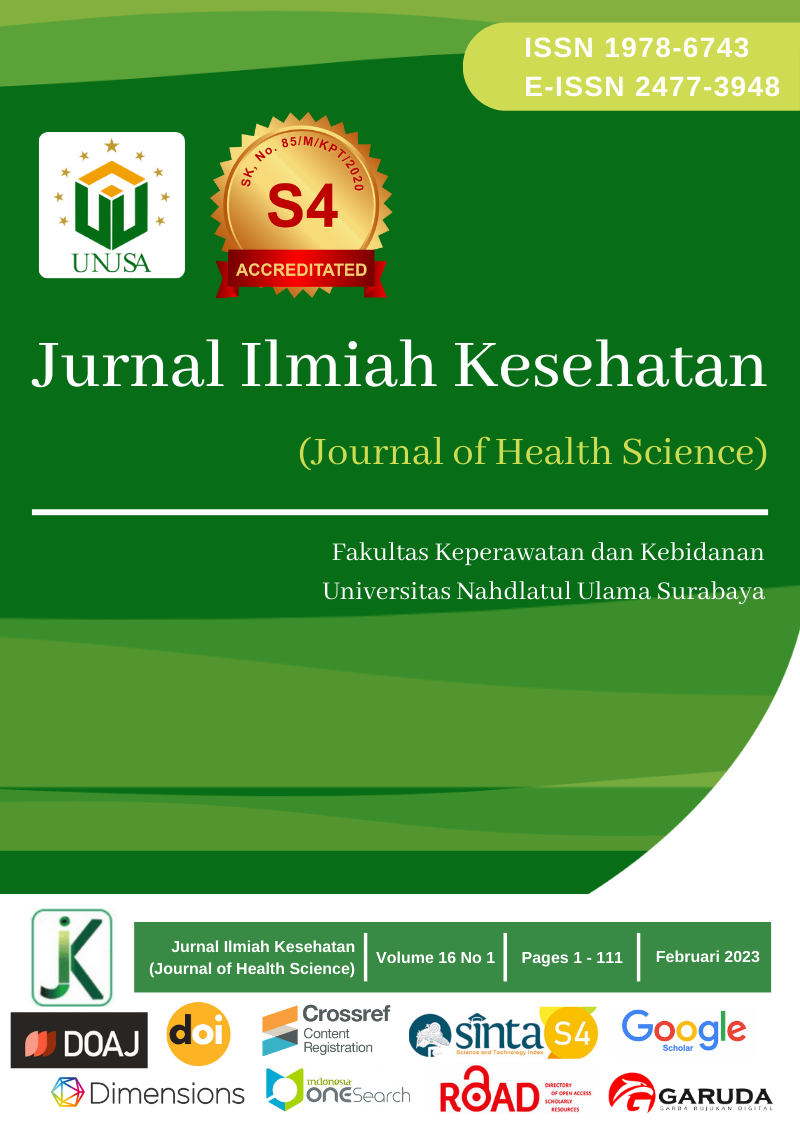OPIOID IN THE PAIN MANAGEMENT OF ACUTE GOUT ARTHRITIS: FRIEND OR FOE?
Main Article Content
Abstract
Introduction: Intense and severe pain is the most common symptom of acute gout arthritis (GA) flare. A recent study revealed that opioids are commonly prescribed for acute gout flare.
Objective: This review aims to explain current evidence of opioid usage in the management of pain for acute GA flare.
Method: The literature search was conducted on PubMed and Google Scholar in June 2022. Relevant articles published in the last 10 years were included.
Results: The evidence of opioid use in managing acute gout arthritis flares is scarce. Currently, no guidelines recommend opioids as an initial analgesic choice in managing acute GA flare. Opioids are indicated in the flare with severe kidney dysfunction if only oral corticosteroids and intra-articular corticosteroids are not effective in reducing pain. Conclusion: Opioids should be used as only adjuvant and last choice in selected cases.
Downloads
Article Details
Copyright (c) 2023 Mega Nilam Sari, Florence Pribadi, Eva M. Anigomang, Gede T.W. Suara, Karmila A. Wardani, Kharisma A. Perdana, Lidya Anin, Yasmine P. Fadhilah, Kevin Luke

This work is licensed under a Creative Commons Attribution-ShareAlike 4.0 International License.
References
Anekar, A. A. and Cascella, M. (2022) ‘WHO Analgesic Ladder’, Journal of the Royal College of Physicians of Edinburgh, 38(3), p. 284. doi: 10.1007/978-3-642-28753-4_102537. DOI: https://doi.org/10.1007/978-3-642-28753-4_102537
Chang, A. K. et al. (2017) ‘Effect of a single dose of oral opioid and nonopioid analgesics on acute extremity pain in the emergency department: A randomized clinical trial’, JAMA - Journal of the American Medical Association, 318(17), pp. 1661–1667. doi: 10.1001/jama.2017.16190. DOI: https://doi.org/10.1001/jama.2017.16190
Dalal, D. S. et al. (2020) ‘Prescription Opioid Use Among Patients With Acute Gout Discharged From the Emergency Department’, Arthritis Care and Research, 72(8), pp. 1163–1168. doi: 10.1002/acr.23928. DOI: https://doi.org/10.1002/acr.23928
Desai, J., Steiger, S. and Anders, H. J. (2017) ‘Molecular Pathophysiology of Gout’, Trends in Molecular Medicine, 23(8), pp. 756–768. doi: 10.1016/j.molmed.2017.06.005. DOI: https://doi.org/10.1016/j.molmed.2017.06.005
FitzGerald, J. D. et al. (2020) ‘2020 American College of Rheumatology Guideline for the Management of Gout’, Arthritis care & research, 72(6), pp. 744–760. doi: 10.1002/ACR.24180. DOI: https://doi.org/10.1002/acr.24180
Jin, M. et al. (2012) ‘Uric acid, hyperuricemia and vascular diseases’, Frontiers in Bioscience, 17(2), pp. 656–669. doi: 10.2741/3950. DOI: https://doi.org/10.2741/3950
Kementerian Kesehatan RI (2022) Daftar Obat FORNAS. Available at: http://e-fornas.binfar.kemkes.go.id/index.php/front/Daftarobat/obat_fornas (Accessed: 18 June 2022).
Leung, Y. Y., Yao Hui, L. L. and Kraus, V. B. (2015) ‘Colchicine-Update on mechanisms of action and therapeutic uses’, Seminars in Arthritis and Rheumatism, 45(3), pp. 341–350. doi: 10.1016/j.semarthrit.2015.06.013. DOI: https://doi.org/10.1016/j.semarthrit.2015.06.013
Low, Qin Jian et al. (2022) ‘Management of gout in the primary care practice’, Malaysian Family Physician, 17(1). doi: 10.1007/s15006-020-9515-x. DOI: https://doi.org/10.51866/rv1165
Mikosz, C. A. et al. (2020) ‘Indication-Specific Opioid Prescribing for US Patients With Medicaid or Private Insurance, 2017’, JAMA network open, 3(5), p. e204514. doi: 10.1001/jamanetworkopen.2020.4514. DOI: https://doi.org/10.1001/jamanetworkopen.2020.4514
Nafziger, A. N. and Barkin, R. L. (2018) ‘Opioid Therapy in Acute and Chronic Pain’, Journal of Clinical Pharmacology, 58(9), pp. 1111–1122. doi: 10.1002/jcph.1276. DOI: https://doi.org/10.1002/jcph.1276
Pathan, H. and Williams, J. (2012) ‘Basic opioid pharmacology: an update’, British Journal of Pain, 6(1), pp. 11–16. doi: 10.1177/2049463712438493. DOI: https://doi.org/10.1177/2049463712438493
Perhimpunan Reumatologi Indonesia (2018) Rekomendasi Pedoman Diagnosis dan Pengelolaan Gout.
Ragab, G., Elshahaly, M. and Bardin, T. (2017) ‘Gout : An old disease in new perspective – A review’, Journal of Advanced Research, 8(5), pp. 495–511. doi: 10.1016/j.jare.2017.04.008. DOI: https://doi.org/10.1016/j.jare.2017.04.008
Richette, P. et al. (2017) ‘2016 updated EULAR evidence-based recommendations for the management of gout’, Annals of the Rheumatic Diseases, 76(1), pp. 29–42. doi: 10.1136/annrheumdis-2016-209707. DOI: https://doi.org/10.1136/annrheumdis-2016-209707
El Ridi, R. and Tallima, H. (2017) ‘Physiological functions and pathogenic potential of uric acid: A review’, Journal of Advanced Research, 8(5), pp. 487–493. doi: 10.1016/j.jare.2017.03.003. DOI: https://doi.org/10.1016/j.jare.2017.03.003
Roddy, E. et al. (2020) ‘Open-label randomised pragmatic trial (CONTACT) comparing naproxen and low-dose colchicine for the treatment of gout flares in primary care’, Annals of the Rheumatic Diseases, 79(2), pp. 276–284. doi: 10.1136/ANNRHEUMDIS-2019-216154. DOI: https://doi.org/10.1136/annrheumdis-2019-216154
Singh, J. A. and Gaffo, A. (2020) ‘Gout epidemiology and comorbidities’, Seminars in Arthritis and Rheumatism, 50(3), pp. S11–S16. doi: 10.1016/j.semarthrit.2020.04.008. DOI: https://doi.org/10.1016/j.semarthrit.2020.04.008
Skoczyńska, M. et al. (2020) ‘Pathophysiology of hyperuricemia and its clinical significance – a narrative review’, Reumatologia, 58(5), pp. 312–323. DOI: https://doi.org/10.5114/reum.2020.100140
Stewart, S. et al. (2016) ‘The first metatarsophalangeal joint in gout: A systematic review and meta-analysis’, BMC Musculoskeletal Disorders, 17(1). doi: 10.1186/s12891-016-0919-9. DOI: https://doi.org/10.1186/s12891-016-0919-9
Stewart, S. et al. (2020) ‘The experience of a gout flare: a meta-synthesis of qualitative studies’, Seminars in Arthritis and Rheumatism, 50(4), pp. 805–811. doi: 10.1016/j.semarthrit.2020.06.001. DOI: https://doi.org/10.1016/j.semarthrit.2020.06.001
Trang, T. et al. (2015) ‘Pain and poppies: The good, the bad, and the ugly of Opioid analgesics’, Journal of Neuroscience, 35(41), pp. 13879–13888. doi: 10.1523/JNEUROSCI.2711-15.2015. DOI: https://doi.org/10.1523/JNEUROSCI.2711-15.2015
Whittle, S. L. et al. (2012) ‘The efficacy and safety of opioids in inflammatory arthritis: A Cochrane systematic review’, Journal of Rheumatology, 39(SUPPL. 90), pp. 40–46. doi: 10.3899/jrheum.120341. DOI: https://doi.org/10.3899/jrheum.120341
Zhang, W. Z. (2021) ‘Why does hyperuricemia not necessarily induce gout?’, Biomolecules, 11(2), pp. 1–11. doi: 10.3390/biom11020280. DOI: https://doi.org/10.3390/biom11020280





